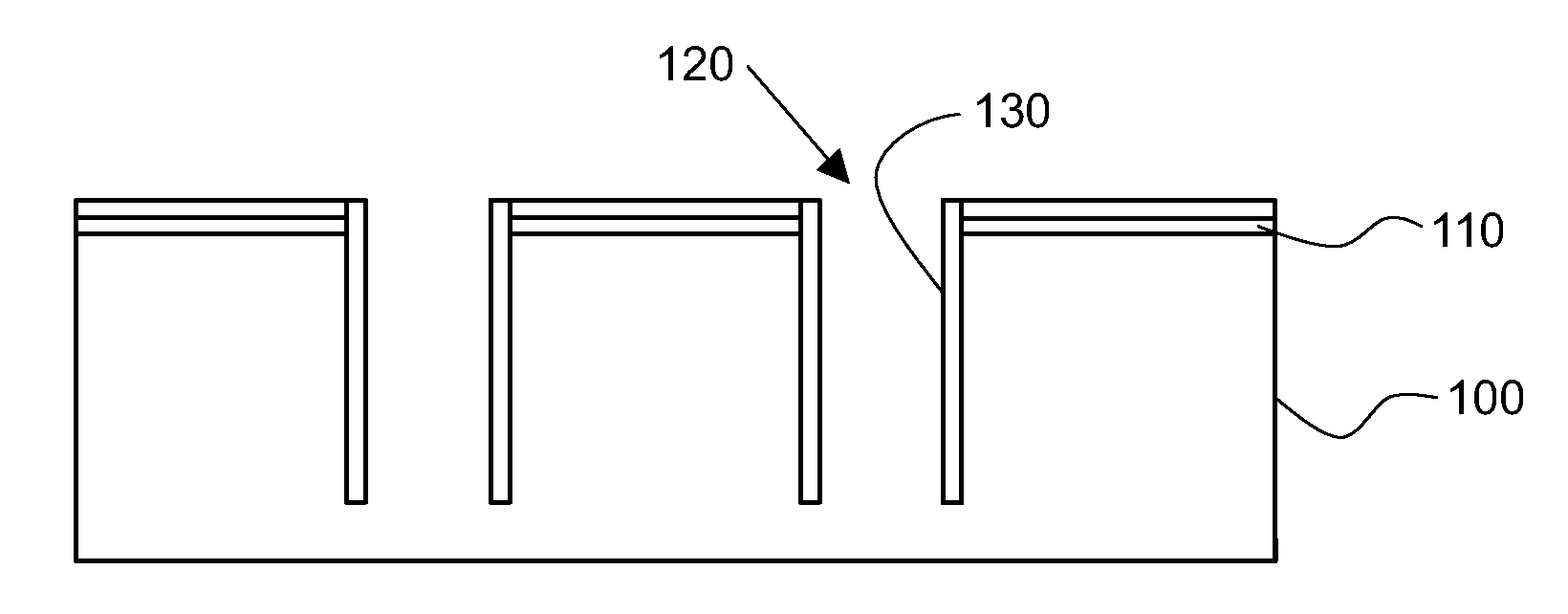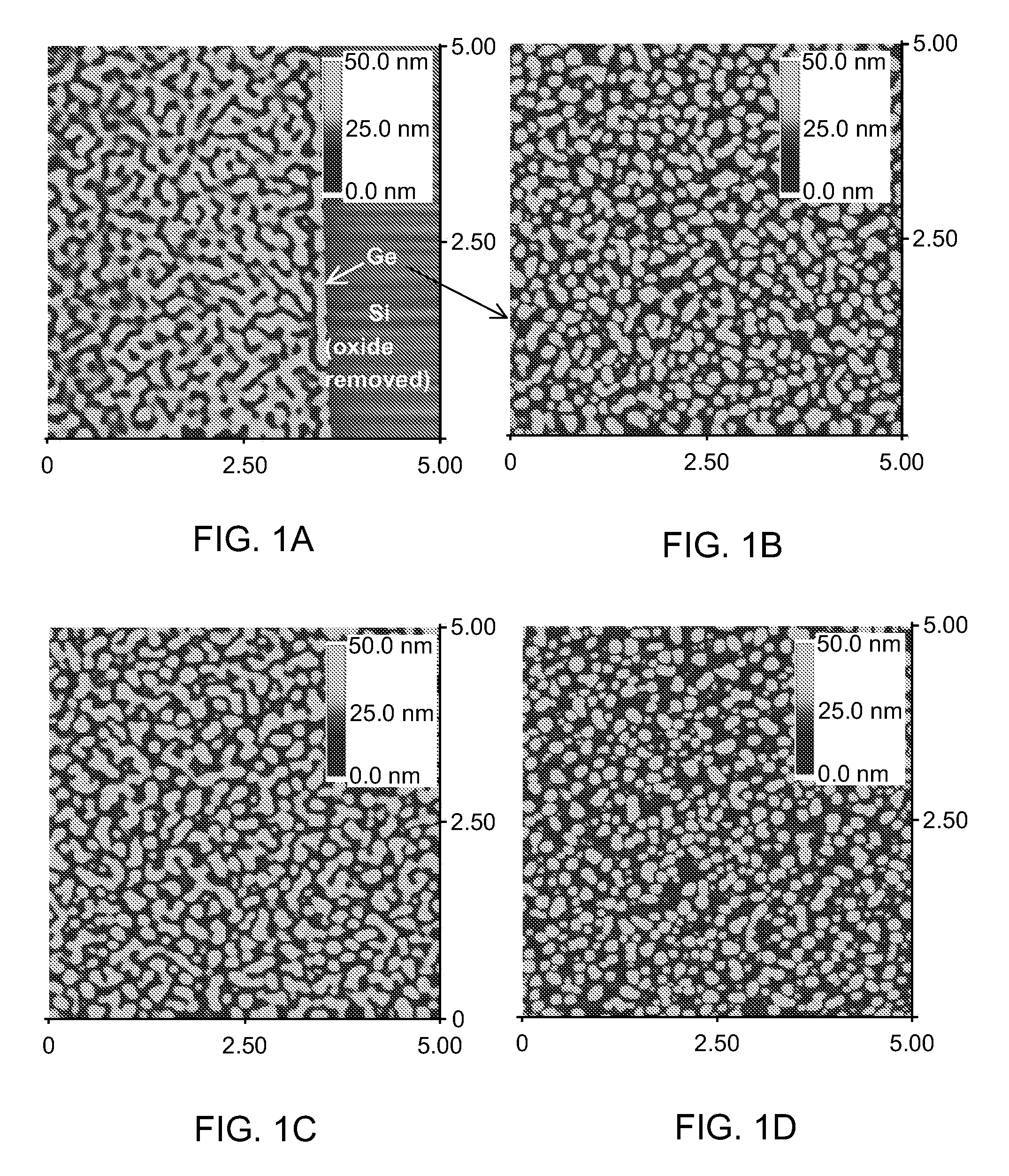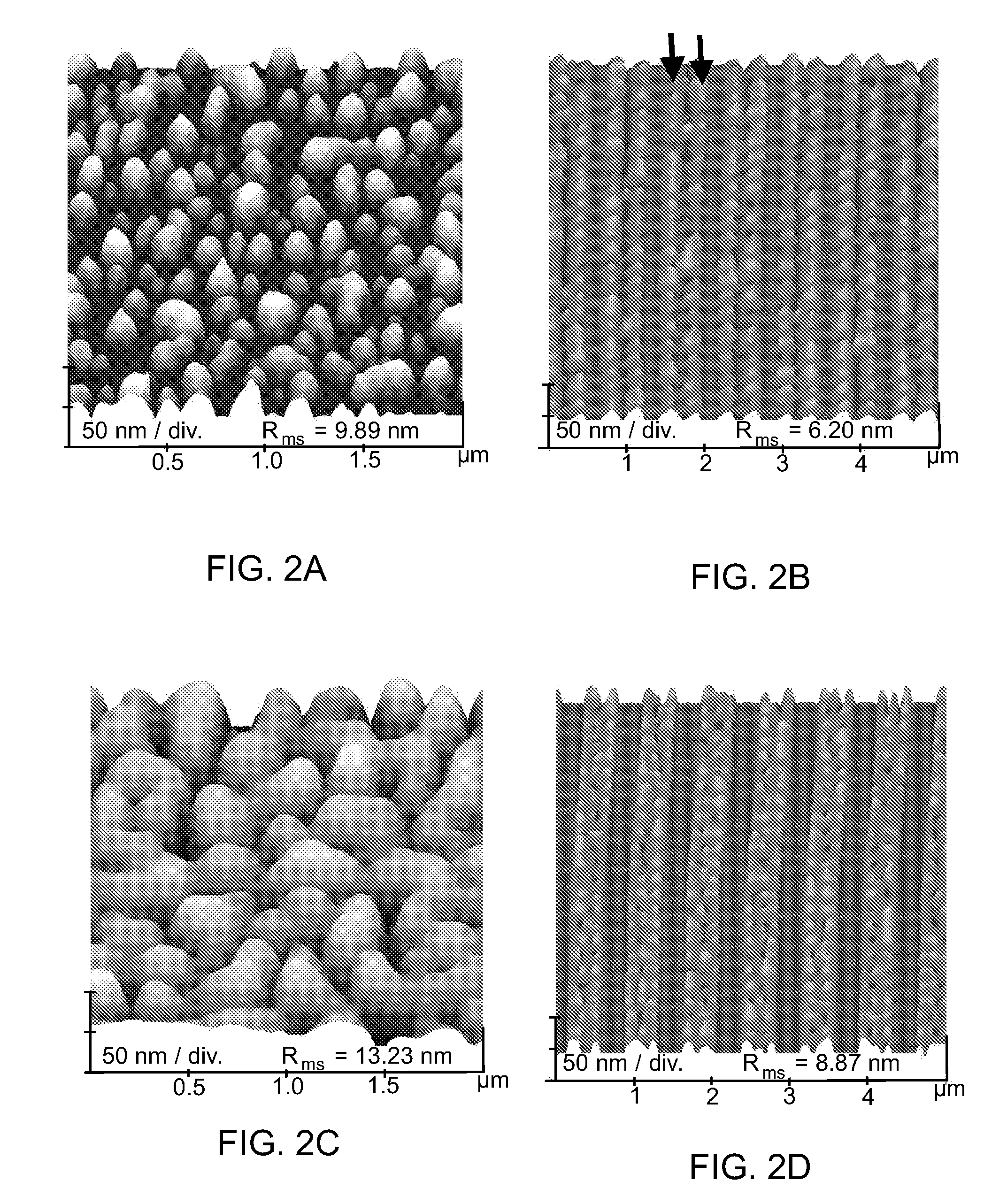Epitazial growth of crystalline material
a crystalline material and growth technology, applied in the growth process of polycrystalline materials, crystal growth processes, chemically reactive gases, etc., can solve the problems of unacceptably high dislocation density of epitaxially grown materials, unsatisfactory integration with silicon-based cmos technology, and inability to meet the requirements of a wide range of applications, so as to reduce surface roughness
- Summary
- Abstract
- Description
- Claims
- Application Information
AI Technical Summary
Benefits of technology
Problems solved by technology
Method used
Image
Examples
Embodiment Construction
[0027]Reference will now be made in detail to the embodiments of the present general inventive concept, examples of which are illustrated in the accompanying drawings, wherein like reference numerals refer to like elements throughout. The embodiments are described below in order to explain the present general inventive concept by referring to the figures.
[0028]An embodiment of the invention is directed to a device including an epitaxially grown crystalline material in a opening in an insulator. FIG. 6A shows one example, illustrating a cross section of a portion of the device. As shown in FIG. 6A, the example includes a crystalline material 140 grown on a substrate 100 in a opening 120 defined in an insulator 110. The substrate 100 may be a crystalline material such as silicon, Ge or sapphire. Insulator 110 is preferably a non-crystalline material such as SiO2. The crystalline material at least at some stage in during its growth has a surface, for example surface 160, below the top ...
PUM
 Login to View More
Login to View More Abstract
Description
Claims
Application Information
 Login to View More
Login to View More - R&D
- Intellectual Property
- Life Sciences
- Materials
- Tech Scout
- Unparalleled Data Quality
- Higher Quality Content
- 60% Fewer Hallucinations
Browse by: Latest US Patents, China's latest patents, Technical Efficacy Thesaurus, Application Domain, Technology Topic, Popular Technical Reports.
© 2025 PatSnap. All rights reserved.Legal|Privacy policy|Modern Slavery Act Transparency Statement|Sitemap|About US| Contact US: help@patsnap.com



